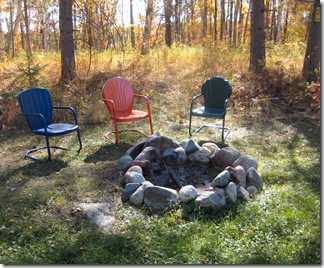When I saw the word for the ESN theme of the week, “lines,” the first thing that came to my mind was “fishing line.” Being from Minnesota, the land of 10,000 lakes, I do quite a little fishing so it should not be too surprising that I would think of fishing line. Minnesota is the land of fresh water fishing.
In the old days fishing was an important food source for the Ojibwa Indians. Northern Minnesota is the land of the Ojibwa (also known as Chippewa or more correctly known as Anishinabe) and I am a member of one of the tribes. Fishing was an important food source but we did not use hook and line. We used a net. Nearly every Indian carried a small net that he could roll out in the evening and could haul it back in the morning full of fish. The fish were cleaned, cooked and eaten or smoked for later use. Every fish was eaten, not just the best tasting ones.
Today nets are not allowed except in very special cases. I guess catching fish would be too easy using a net. We must use a hook and line. We can however, have the use of a gas powered motorized boat equipped with a remote controlled trolling motor, an electronic fish finder, and electronic GPS tracking equipment. We can use special graphite fishing rods with high quality fishing reels equipped with specially engineered fishing line. And, there is all manner of fishing lures to use. All very expensive of course! And, naturally, while fishing, one would want to be wearing his special all weather Eddy Bauer fishing clothes. All this, just to catch a few fish that most likely the Department of Natural Resources stocked there just for that purpose. Some people, if by chance, were to catch an especially large fish they might even have it stuffed for mounting on the wall. In other words, fishing has become very expensive.
It all seems a bit silly to me. I guess fishing has changed a lot since I was a kid. I still prefer to just sit in my chair at the end of my dock, cast out a hook baited with a dug-up worm or a captured grasshopper. In an hour I can catch a half dozen blue gills and maybe a big bass. Just enough to make one good meal! Maybe some day when my fishing rod and reel are worn out and useless I will mount “them” on the wall as a tribute to the number of meals it helped provide.
Speaking of fishing and Indians, I will call your attention to a book that I have for sale in my curios shop. It is titled The Red Knife and is written by William Kent Krueger. Krueger is an exceptional mystery writer. Like all Krueger’s novels, The Red knife is a mystery and it takes place in Northern Minnesota. The main character, Corcoran O’Connor, is a private investigator and is part Ojibwa and in this novel much of the Ojibwa culture seeps through. Once you have read one of Krueger’s novels you will want to read them all. Stop in to Sirocco’s Curios shop and take a look around. There is more there than just books.



 One thing we like to do at our north woods cabin is to sit out by the fire pit with a nice big fire going. We talk family issues, tell stories and make smores. We Native Americans are quite good story tellers, you know. Although in my case I am probably more of a bull shitter rather than a good story teller. Oh well!
One thing we like to do at our north woods cabin is to sit out by the fire pit with a nice big fire going. We talk family issues, tell stories and make smores. We Native Americans are quite good story tellers, you know. Although in my case I am probably more of a bull shitter rather than a good story teller. Oh well!